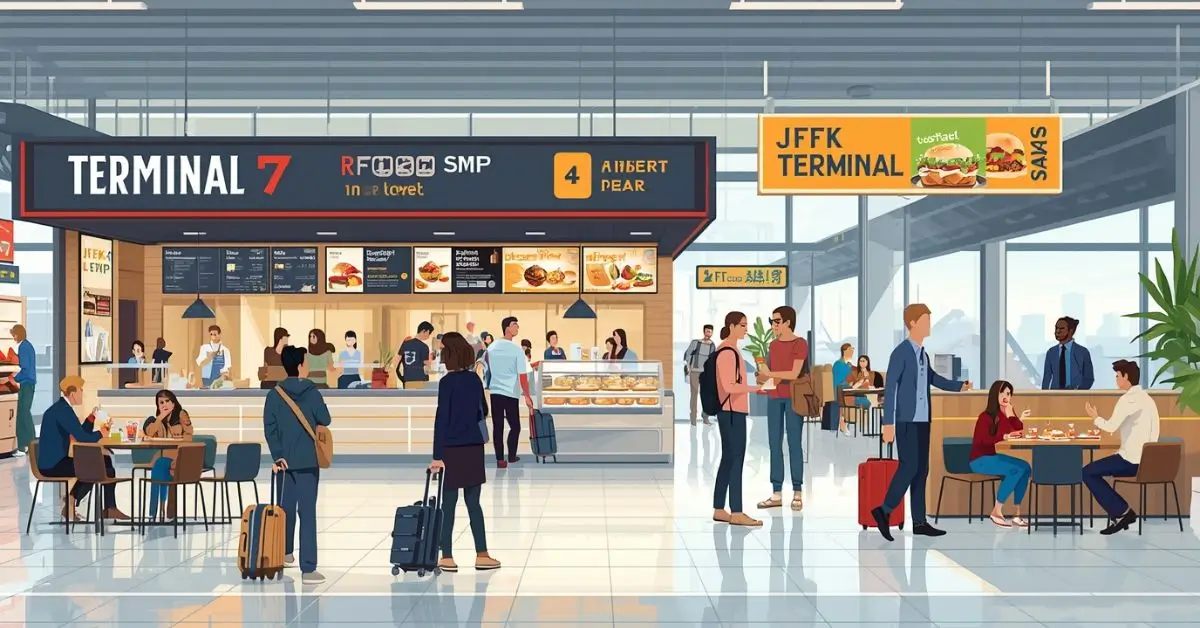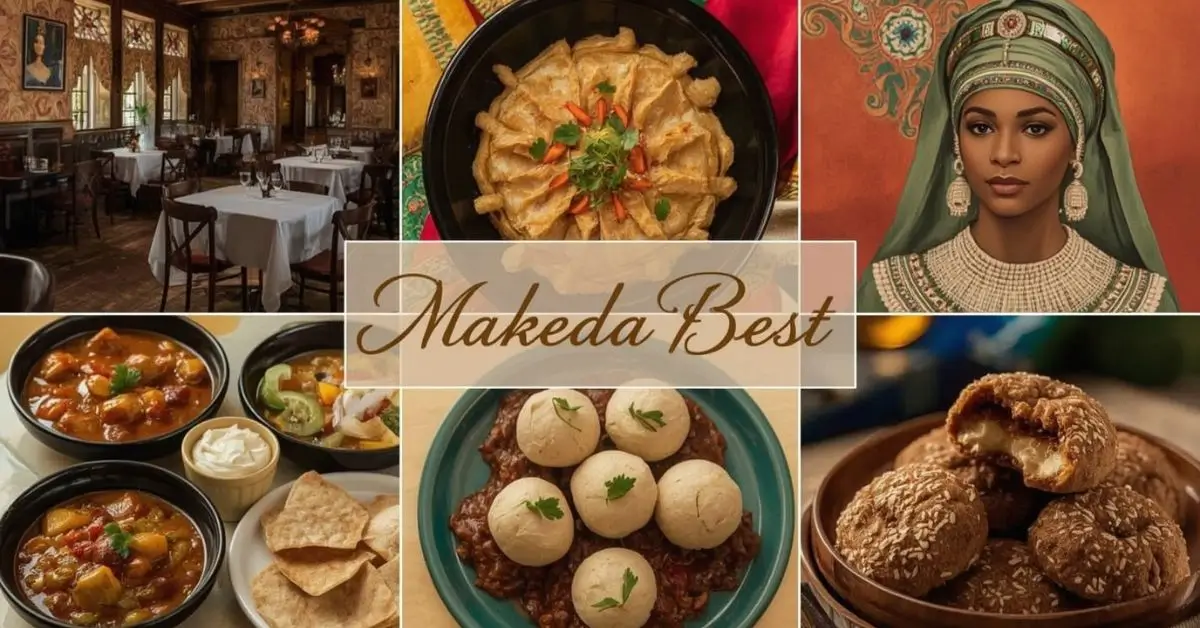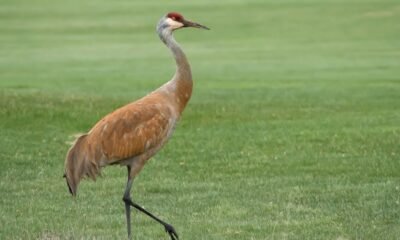FOOD
BFC Monster Energy: Legendary Power Can Shocks Fans – 32

bfc monster energy can so legendary among energy drink fans? If you’ve ever spotted that massive can on a store shelf and thought, “Is that even real?”—you’re not alone. The bfc monster energy can is more than just a drink; it’s a cultural icon, a collector’s item, and a caffeine powerhouse all rolled into one. But what’s the real story behind the monster energy bfc can? Is it still available in 2025, and is it worth the hype?
Let’s crack open the truth about the monster energy drink bfc can—from its origins and features to its pros, cons, and the wild stories that have made it a legend in the energy drink world.
What Is BFC Monster Energy? The Origins of a Giant
The Birth of the Monster Energy BFC Can
The bfc monster energy can first hit the market in the mid-2000s, and it was impossible to ignore. BFC stands for “Big F***ing Can”—yes, that’s really what it means. Monster Energy wasn’t shy about the name, and fans loved the boldness. At a whopping 32 ounces (that’s nearly a liter!), the monster energy bfc can was the largest energy drink can ever sold in the U.S.
Why did Monster Energy launch such a massive can? The answer is simple: to make a statement. In a world of 8- and 16-ounce energy drinks, the BFC was a flex—a way to say, “Go big or go home.” It quickly became a favorite among gamers, truckers, night-shift workers, and anyone who needed a serious jolt of energy.
The BFC Monster Energy Legacy
Even though the monster energy drink bfc can was discontinued in the U.S. years ago, its legend lives on. Collectors hunt for unopened cans, and fans still share stories about the time they finished a whole BFC in one sitting. The can’s sheer size, bold branding, and over-the-top energy kick made it unforgettable.
Monster Energy BFC Can: Features, Flavors, and What Made It Unique
Size Matters: The 32-Ounce Powerhouse
The most obvious feature of the monster energy bfc can was its size. At 32 ounces, it was double the size of a regular Monster can and four times bigger than a standard energy drink. That’s a lot of liquid—and a lot of caffeine.
Flavors and Formulas
The original bfc monster energy can was available in the classic Monster flavor, but over time, limited editions and special flavors popped up. Some fans remember the BFC Lo-Carb and BFC Assault versions, though these were much harder to find.

The Design
The monster energy bfc can was instantly recognizable. It featured the iconic Monster claw logo, bold “BFC” lettering, and a warning label that made it clear: this was not your average energy drink. The can was so big, it barely fit in most cup holders.
Real-Life Stories: The BFC Monster Energy Experience
“I remember chugging a BFC before a college all-nighter. I finished my paper, cleaned my apartment, and still couldn’t sleep. That can was no joke!”
The bfc monster energy can wasn’t just a drink—it was an experience. People still share stories online about their first (and sometimes only) time tackling the giant can. Some say it powered them through epic gaming sessions, while others admit it was a bit too much to handle.
Is the Monster Energy BFC Can Still Available in 2025?
The Discontinuation
Sadly, the monster energy drink bfc can was discontinued in the U.S. around 2012. The official reason? Monster cited “changing market demands” and concerns about excessive caffeine consumption. The FDA was also starting to look more closely at high-caffeine drinks, and the BFC’s 320mg of caffeine per can was pushing the limits.
Can You Still Find BFC Monster Energy?
While you won’t find the monster energy bfc can in most stores today, unopened cans occasionally pop up on auction sites and collector forums. Some international markets may still have similar large-format Monster cans, but the original BFC is a rare find.
Why Did Monster Energy Discontinue the BFC Can?
Health and Safety Concerns
The main reason for discontinuing the bfc monster energy can was health and safety. With 320mg of caffeine in a single can, it was easy to exceed the recommended daily limit. There were growing concerns about the risks of consuming too much caffeine at once, especially among teens and young adults.
Market Trends
Energy drink trends shifted toward smaller, more convenient cans and sugar-free options. The BFC, while iconic, didn’t fit the new direction. Monster Energy focused on expanding its flavor lineup and introducing new products like Monster Ultra and Java Monster.
The Pros and Cons of the Monster Energy BFC Can
Pros
- Massive Energy Boost: If you needed to stay awake for hours, nothing beat the BFC.
- Collector’s Item: Unopened cans are now valuable collectibles.
- Iconic Design: The can’s look and feel were unmatched.
Cons
- Too Much Caffeine: 320mg in one can is a lot, and not everyone could handle it.
- Discontinued: You can’t buy it in stores anymore.
- Not for Everyone: The size and caffeine content made it risky for some people.
Monster Energy Drink BFC Can: Risks and Safety in 2025
Caffeine Content
The monster energy drink bfc can contained 320mg of caffeine—about four cups of coffee. That’s well above the FDA’s recommended daily limit for most adults (400mg). Drinking a whole BFC in one go could lead to jitters, heart palpitations, or worse.
Who Should Avoid It?
Anyone sensitive to caffeine, pregnant women, and people with heart conditions should steer clear. Even healthy adults were advised to drink the BFC slowly and never mix it with alcohol.
The Shift to Safer Options
In 2025, energy drink companies are more focused on transparency, clear labeling, and offering lower-caffeine options. The BFC was a product of its time—a bold experiment that probably wouldn’t fly today.
Monster Energy BFC Can in Pop Culture
The Meme Factor
The bfc monster energy can became a meme in its own right. People joked about using it as a dumbbell, a flower vase, or even a doorstop. Its over-the-top size made it perfect for internet humor.
Gaming and Esports
Gamers loved the BFC for marathon sessions. It became a staple at LAN parties and esports events, with players bragging about how many they could finish in a night.
Collecting the Monster Energy BFC Can: Tips for 2025
Where to Find Unopened Cans
If you’re a collector, your best bet is online auction sites, collector groups, and energy drink forums. Prices vary, but a mint-condition monster energy bfc can can fetch serious money.
How to Spot a Fake
With the BFC’s cult status, fakes have popped up online. Look for authentic Monster branding, correct labeling, and the right can size. If the price seems too good to be true, it probably is.
Monster Energy Drink BFC Can vs. Modern Energy Drinks
How Does It Compare?
Most energy drinks today come in 8- to 16-ounce cans, with caffeine content ranging from 80mg to 200mg. The bfc monster energy can was in a league of its own—twice the size and nearly double the caffeine of most competitors.
Why the Shift?
Consumers are more health-conscious in 2025. There’s a bigger focus on moderation, sugar-free options, and functional ingredients like B vitamins and electrolytes. The BFC was all about excess; today’s drinks are about balance.
The Future of Monster Energy: Will the BFC Ever Return?
Could We See a Comeback?
Fans still ask Monster Energy to bring back the BFC. While there’s no official word, it’s unlikely in today’s regulatory climate. However, limited-edition releases or special promotions aren’t out of the question.
What’s Next for Monster Energy?
Monster continues to innovate, with new flavors, healthier formulas, and even plant-based options. The spirit of the BFC—bold, unapologetic, and a little bit wild—lives on in the brand’s DNA.
Real User Voices: What People Say About BFC Monster Energy
“The BFC was my go-to for road trips. Nothing else kept me awake like that giant can. I wish they’d bring it back, but I get why they stopped.”
“I still have an empty BFC can on my shelf. It’s a conversation starter every time someone visits.”
FAQs
1. What does BFC stand for in Monster Energy BFC can?
BFC stands for “Big F***ing Can.” It was Monster Energy’s way of highlighting the can’s massive 32-ounce size.
2. Is the Monster Energy BFC can still available?
No, the monster energy bfc can was discontinued in the U.S. around 2012. You might find unopened cans from collectors, but it’s no longer sold in stores
3. How much caffeine was in the Monster Energy drink BFC can?
Each monster energy drink bfc can contained 320mg of caffeine—about four times the amount in a regular cup of coffee.
4. Why was the BFC Monster Energy can discontinued?
The main reasons were health concerns about excessive caffeine and changing market trends toward smaller, safer energy drinks.
The Bottom Line: Should You Try BFC Monster Energy If You Find One?
The bfc monster energy can is a piece of energy drink history. If you’re lucky enough to find one, it’s best kept as a collector’s item rather than a beverage. The risks of consuming that much caffeine in one go just aren’t worth it for most people.
FOOD
Top JFK Terminal 7 Food Options for Travelers

JFK Terminal 7 food cater to a wide range of tastes. From classic American fare to international cuisine, you’ll find options to fuel up before your flight. Some standout restaurants include:
- Shake Shack – Perfect for a quick burger and fries fix.
- Burger King – For fast food travelers who want consistency.
- Tortilla Coast – Serving Mexican classics like tacos and burritos.
Each restaurant provides different seating styles, from casual quick bites to more relaxed sit-down options, making it easier to choose depending on your schedule and mood.
One traveler tweeted: “Grabbed a burrito at Tortilla Coast in Terminal 7 before my flight—best airport meal ever!”
Terminal 7 Dining Options: Something for Everyone
Terminal 7 dining options are designed to accommodate a variety of schedules and appetites. Whether you have just 15 minutes or an hour before boarding, there’s a solution:
- Quick Meals for Travelers – Grab sandwiches, salads, or sushi for a fast bite.
- Sit-Down Experiences – Enjoy a more leisurely meal at restaurants like Tortilla Coast or fine-dining spots in the terminal.
- Cafes and Coffee Shops – Fuel up with coffee, pastries, or smoothies from JFK Terminal 7 coffee shops.
With such variety, it’s easy to find meals that are fast, affordable, or indulgent, depending on your needs.
JFK Airport Food Court: Centralized Convenience
The JFK airport food court in Terminal 7 is perfect for travelers who want a single location with multiple options. Highlights include:
- Grab-and-go sandwiches and wraps
- Fast food chains like Burger King and Chick-fil-A
- Cafes serving coffee, tea, and pastries
- International options including Asian and Mediterranean cuisine
The food court is centrally located, making it easy to grab a bite without walking across the terminal.
Terminal 7 Cafes and Bars: Coffee, Cocktails, and More
For those who prefer drinks over full meals, Terminal 7 cafes and bars provide great options:
- Starbucks – The classic go-to for coffee lovers.
- Hudson News Café – Quick coffee, snacks, and reading material.
- Flight Bar & Lounge – A place to unwind with cocktails before your flight.
Whether you need a caffeine boost or a quick drink, these spots make waiting for your flight more enjoyable.
Best Food in JFK Terminal 7: Top Picks
When it comes to the best food in JFK Terminal 7, certain spots consistently receive high praise:
- Shake Shack – Delicious burgers and milkshakes.
- Tortilla Coast – Flavorful Mexican dishes, great for quick meals or a sit-down lunch.
- Starbucks Reserve – Premium coffee experience for travelers who appreciate quality beans.
- Burger King – Reliable fast food for families and kids.
Travelers often mix and match depending on timing, dietary needs, and budget.
JFK Terminal 7 Food: Quick and Convenient
If you’re short on time, JFK Terminal 7 fast food options are plentiful:
- Burger King – Classic burgers and fries.
- Chick-fil-A – Popular for chicken sandwiches and nuggets.
- Shake Shack – For a gourmet fast-food alternative.
These options are ideal for travelers in a hurry who still want something satisfying before their flight.
Airport Dining Terminal 7: Tips for Travelers
To make the most of airport dining Terminal 7, keep these tips in mind:
- Check menus online – Many restaurants post menus ahead of time.
- Arrive early for sit-down meals – Avoid rushing to eat.
- Use grab-and-go options – Perfect for short layovers.
- Consider dietary needs – Gluten-free, vegetarian, and kid-friendly options are available.
Planning ahead ensures you enjoy a stress-free and tasty airport experience.
JFK Terminal 7 Menu: What’s Available
JFK Terminal 7 menu offerings include:
- Breakfast items – Bagels, croissants, coffee, and breakfast sandwiches.
- Lunch and dinner – Burgers, sandwiches, tacos, salads, pasta dishes.
- Snacks – Pastries, chips, fruit, and granola bars.
- Beverages – Coffee, tea, smoothies, sodas, and alcoholic drinks at select bars.
Menus are updated regularly, and some restaurants feature seasonal specials or promotions.
Terminal 7 Grab-and-Go Meals
For travelers who don’t have time to sit down, Terminal 7 grab-and-go meals are a lifesaver:
- Pre-packaged sandwiches and salads
- Sushi boxes and wraps
- Snack packs for kids and adults
- Bottled drinks and smoothies
Grab-and-go options ensure you stay fueled without missing your flight.
JFK Terminal 7 Coffee Shops: Caffeine and Comfort
JFK Terminal 7 coffee shops provide energy and relaxation:
- Starbucks and Starbucks Reserve for coffee enthusiasts
- Hudson News Café for a casual snack with your coffee
- Specialty espresso and latte options at smaller cafes
Coffee shops are ideal for early morning flights or long layovers, offering both caffeine and a small bite to eat.
Real-Life Example: Traveler Experience
One frequent flyer shared:
“I usually grab a breakfast sandwich at Starbucks in Terminal 7 and then a quick taco at Tortilla Coast before my flight. Makes long layovers much better!”
This highlights how combining cafes and restaurants in Terminal 7 can improve your airport dining experience.
FAQ’s
What food options are available in JFK Terminal 7?
Terminal 7 offers restaurants, fast food, cafes, and grab-and-go meals for all tastes and schedules.
What are the best restaurants to eat at Terminal 7 JFK?
Popular options include Shake Shack, Tortilla Coast, Burger King, and Starbucks Reserve for coffee lovers.
Are there kid-friendly food options at JFK Terminal 7?
Yes, many fast-food chains and cafes provide kid-friendly meals, snacks, and beverages.
What are Terminal 7 dining hours and menus?
Dining hours vary; most restaurants and cafes open early and close late, with menus updated regularly online.
Conclusion
From quick bites to sit-down meals, JFK Terminal 7 food has options to suit every traveler. With restaurants, coffee shops, grab-and-go meals, and fast-food outlets, your layover or pre-flight experience can be enjoyable and stress-free.
FOOD
Makeda Best Dishes: Top Ethiopian Flavors to Try

When people search for “makeda best”, they are often looking for more than just one answer. Some may want to know the best dishes at Makeda restaurants. Others might be curious about Makeda cookies, a beloved dessert brand. Cultural readers may want to revisit the rich history of Queen Makeda, the legendary Queen of Sheba, while music enthusiasts may seek out Makeda-inspired songs and performances.
This guide brings together the culinary, cultural, and historical highlights associated with the name Makeda, offering insights and trusted references to help you discover what makes Makeda best in every sense.
Makeda in Food and Dining
Makeda Restaurant Reviews
For food lovers, Makeda is often tied to Ethiopian cuisine. Many Makeda restaurants across the world celebrate authentic Ethiopian dishes, blending spices and flavors unique to East Africa.
- Best dishes to try at Makeda restaurant often include:
- Doro Wat (spicy chicken stew)
- Kitfo (minced beef seasoned with spices)
- Injera platters with lentils, greens, and stews
According to Eater and Saveur, Ethiopian dining experiences emphasize community, as dishes are traditionally shared from a single platter.
Makeda Bakery Specialties
Beyond savory cuisine, Makeda cookies have become a dessert staple. If you’ve ever searched for Makeda best cookie flavors, you’ll likely come across raving reviews for:
- Classic chocolate chip
- Red velvet
- Oatmeal raisin
- Gluten-free variations
Food blogs like Serious Eats and The Spruce Eats highlight how these cookies balance indulgence with innovation.
Makeda in Music and Culture
Makeda Best Music Tracks
For music enthusiasts, Makeda has also inspired songs. For example, Makeda by Les Nubians gained global recognition, celebrated for its Afrocentric rhythm and soulful storytelling. Many Top 10 Makeda songs and performances lists feature this track alongside modern covers and reinterpretations.
Makeda Cultural Heritage
Culturally, the word Makeda carries deep roots. It is often connected to heritage, identity, and pride in African and diasporic communities. Content creators and wellness advocates highlight Makeda as a symbol of resilience, beauty, and strength.
Queen Makeda: History and Legacy
Who Was Queen Makeda and Why Is She Famous?
The most iconic reference is Queen Makeda, known widely as the Queen of Sheba. Historical texts, including the Kebra Nagast (Ethiopian royal chronicles), describe her as a wise and powerful monarch who visited King Solomon.
- Best cultural facts about Queen Makeda (Sheba):
- She is a central figure in Ethiopian history.
- Her legacy symbolizes wisdom, trade, and diplomacy.
- Scholars link her story to Jewish, Christian, and Islamic traditions.
Sources such as Encyclopedia Britannica and World History Encyclopedia verify her importance in both ancient and modern narratives.
Lifestyle and Modern Interpretations
Today, Makeda best is not just a matter of history or dining. Lifestyle seekers embrace Makeda through:
- Wellness branding (health shops, yoga studios using the name Makeda)
- Cultural events celebrating African heritage
- Fusion cuisine that blends Ethiopian roots with modern global flavors
This makes Makeda a versatile touchpoint across food, history, music, and lifestyle.
Quick Comparison: Makeda Best in Different Fields
| Category | Makeda Best Example | Why It Stands Out |
|---|---|---|
| Food | Doro Wat at Makeda restaurants | Rich spices, traditional Ethiopian dish |
| Desserts | Makeda cookies (Red Velvet, Chocolate) | Popular flavors, widely reviewed online |
| Music | “Makeda” by Les Nubians | Global Afrocentric hit |
| Culture | Queen Makeda (Sheba) legacy | Historical wisdom and heritage |
| Lifestyle | Makeda wellness & brand names | Symbol of identity and strength |
FAQ’s
What is Makeda best known for?
Makeda is best known for its connections to Ethiopian cuisine, cookies, cultural identity, and the Queen of Sheba.
Best dishes to try at Makeda restaurant?
Favorites include Doro Wat, Kitfo, and Injera platters, offering authentic Ethiopian flavors.
Who was Queen Makeda and why is she famous?
She was the legendary Queen of Sheba, celebrated for her wisdom, diplomacy, and influence in African and Middle Eastern history.
Makeda best cookie flavors reviewed?
Top flavors include Chocolate Chip, Red Velvet, and Oatmeal Raisin, widely loved by dessert fans.
Where to find the best Makeda desserts near me?
Check local Makeda bakeries or delivery services offering cookies and specialty treats.
Is Makeda best for traditional or modern cuisine?
Both — Makeda restaurants focus on traditional Ethiopian dishes, while Makeda bakeries and brands bring a modern twist.
Conclusion
Whether you’re enjoying Makeda’s best dishes, savoring a Makeda cookie, listening to Makeda-inspired music, or exploring the legend of Queen Makeda, one thing is clear: Makeda represents excellence across cultures, cuisines, and generations.
FOOD
Dining with the Sandhill Crane: Nature’s Graceful Forager

The Omnivorous Diet of the Sandhill Crane
Dining with the Sandhill Crane While the term “omnivore” may conjure thoughts of a jack-of-all-trades feeder, the Sandhill Crane elevates omnivory into an art form. Whether probing shallow waters in wetlands, stalking through agricultural fields, or foraging across grasslands, Sandhill Cranes showcase a remarkable range of dietary preferences.
Their menu spans both plant and animal matter. Aquatic invertebrates, including snails and crustaceans, are a staple in wetland habitats. Insects, such as beetles, grasshoppers, and dragonfly larvae, are eagerly consumed in warmer months, while small vertebrates—like frogs, mice, or even snakes—may round out their protein intake when available. On the botanical side, their diet includes sedge tubers, seeds, berries, and cultivated crops like corn, wheat, and sorghum. Their foraging behavior shifts with the seasons, and their ability to exploit both wild and agricultural food sources is key to their widespread distribution.
Foraging Habits Across Changing Habitats
Sandhill Cranes are migratory birds, often traveling thousands of kilometers between their breeding grounds in the northern United States and Canada and their wintering sites in the southern U.S. and Mexico. This migration demands high energy, and food plays a vital role in preparing for and recovering from these long flights.
During spring and fall migrations, large flocks congregate in places like the Platte River in Nebraska—a globally recognized stopover where cranes feed intensively in nearby cornfields and wet meadows. Here, high-calorie grains like leftover corn are critical, supplementing the birds’ fat reserves needed for sustained flight. Simultaneously, they forage in wetlands and grasslands for worms, beetles, and other invertebrates that provide protein.
When nesting in northern wetlands, Sandhill Cranes pivot to a more animal-based diet, feeding on amphibians, aquatic insects, and small fish to meet the increased nutritional demands of breeding and chick-rearing. In contrast, their winter diets lean more toward plant matter due to limited availability of animal prey. This flexibility in feeding across vastly different landscapes and seasons is a hallmark of their survival strategy.

Feeding Ecology and Behavior
Observing Sandhill Cranes forage is to watch a methodical, often cooperative process. These birds use their long, pointed bills to probe soil, mud, and water in search of hidden morsels. Their keen eyesight helps them detect movement, especially of insects or amphibians. While foraging alone is not uncommon, they often feed in pairs or small family groups, especially when raising young. Juvenile cranes learn to identify edible items by watching their parents and mimicking behaviors.
In agricultural areas, Sandhill Cranes exhibit opportunistic behavior, often following harvests to glean residual grains. Their presence in crop fields has led to both admiration and conflict. Farmers in some regions consider cranes beneficial due to their consumption of insect pests, while others see them as nuisances, particularly when flocks descend on newly planted seeds. Conservationists and wildlife managers continue to explore solutions that balance agricultural interests with the preservation of these birds and their habitats.
Young Cranes and Parental Feeding
The diet of juvenile Sandhill Cranes is critical to their development and reflects the nurturing instincts of their parents. Shortly after hatching, colts—baby cranes—are fed regurgitated food by both adults. Their early diet is rich in insects and small invertebrates, providing the protein necessary for rapid growth. Within weeks, they begin to forage on their own under the watchful guidance of their parents, gradually expanding their diet to include more plant matter.
This dietary education is essential. Unlike many birds that fledge and become independent within weeks, juvenile Sandhill Cranes typically remain with their parents through the first migration, honing their foraging skills along the way. The nutritional knowledge passed from generation to generation supports not only individual survival but the resilience of the species as a whole.
The Ecological Role of the Sandhill Crane’s Diet
Beyond individual sustenance, the diet of the Sandhill Crane plays a role in shaping ecosystems. By feeding on weed seeds and insect pests, cranes contribute to natural pest control and help maintain plant diversity in grasslands. Their movements across landscapes can also support seed dispersal, particularly of wetland plants.
Additionally, as they forage and probe through mud and sediment, cranes help aerate the soil and cycle nutrients. These seemingly small behaviors contribute to the overall health of their habitats. From marshes and meadows to farmlands and floodplains, the Sandhill Crane is more than a graceful forager—it is an ecological participant with wide-reaching influence.
Challenges and Conservation Considerations
Although their varied diet aids their survival, Sandhill Cranes face ongoing threats. Habitat loss, especially of wetlands and prairie ecosystems, limits their access to natural food sources. Urban development, pollution, and changes in farming practices can disrupt traditional foraging grounds. In some regions, increased reliance on agricultural crops has made cranes vulnerable to pesticide exposure or direct conflict with landowners.
Conservation efforts focus on protecting stopover habitats, promoting sustainable agriculture, and educating the public about coexistence. Recognizing the interconnectedness of their dietary habits with broader ecological systems is essential for ensuring the long-term survival of these majestic birds.

FAQs: Understanding the Sandhill Crane’s Diet
1. What do Sandhill Cranes primarily eat?
They consume a wide range of foods including insects, amphibians, grains, tubers, seeds, and small vertebrates, depending on habitat and season.
2. Do Sandhill Cranes eat crops like corn and wheat?
Yes, especially during migration and winter. They often forage in harvested agricultural fields for leftover grains.
3. Are Sandhill Cranes considered omnivores?
Absolutely. Their diet includes both plant and animal matter, classifying them as omnivorous birds.
4. What do young Sandhill Cranes eat?
Chicks start with a protein-rich diet of insects and invertebrates, gradually incorporating more plant material as they mature.
5. Do Sandhill Cranes forage in groups?
Often, yes. While they can feed alone, they are frequently seen foraging in pairs or family units, particularly during breeding and migration.
6. How do Sandhill Cranes find their food?
They use visual cues and tactile probing with their bills to locate food in soil, mud, water, or vegetation.
Conclusion
The Sandhill Crane’s dining habits are a testament to the bird’s adaptability, intelligence, and deep ecological roots. Whether wading through a marsh or strolling a sunlit cornfield, these graceful foragers embody the intricate relationship between wildlife and the land. Their diverse and shifting diet not only sustains their life journeys but also underscores the importance of preserving the habitats that nourish them.

 SCIENCE3 months ago
SCIENCE3 months agoThe Baby Alien Fan Bus Chronicles

 BUSINESS3 months ago
BUSINESS3 months agoMastering the Art of Navigating Business Challenges and Risks

 WORLD3 months ago
WORLD3 months agoRainwalkers: The Secret Life of Worms in the Wet

 WORLD3 months ago
WORLD3 months agoRainborne Royals: The Rise of Winged Termites

 WORLD3 months ago
WORLD3 months agoFox News Returns to Dish: Broadcast Battle Resolved

 EDUCATION3 months ago
EDUCATION3 months agoFresh Bites: Foodstuffs Update

 FOOD3 months ago
FOOD3 months agoDining with the Sandhill Crane: Nature’s Graceful Forager

 WORLD3 months ago
WORLD3 months agoTurning Point: Inside Today’s Youth Detention Developments
















